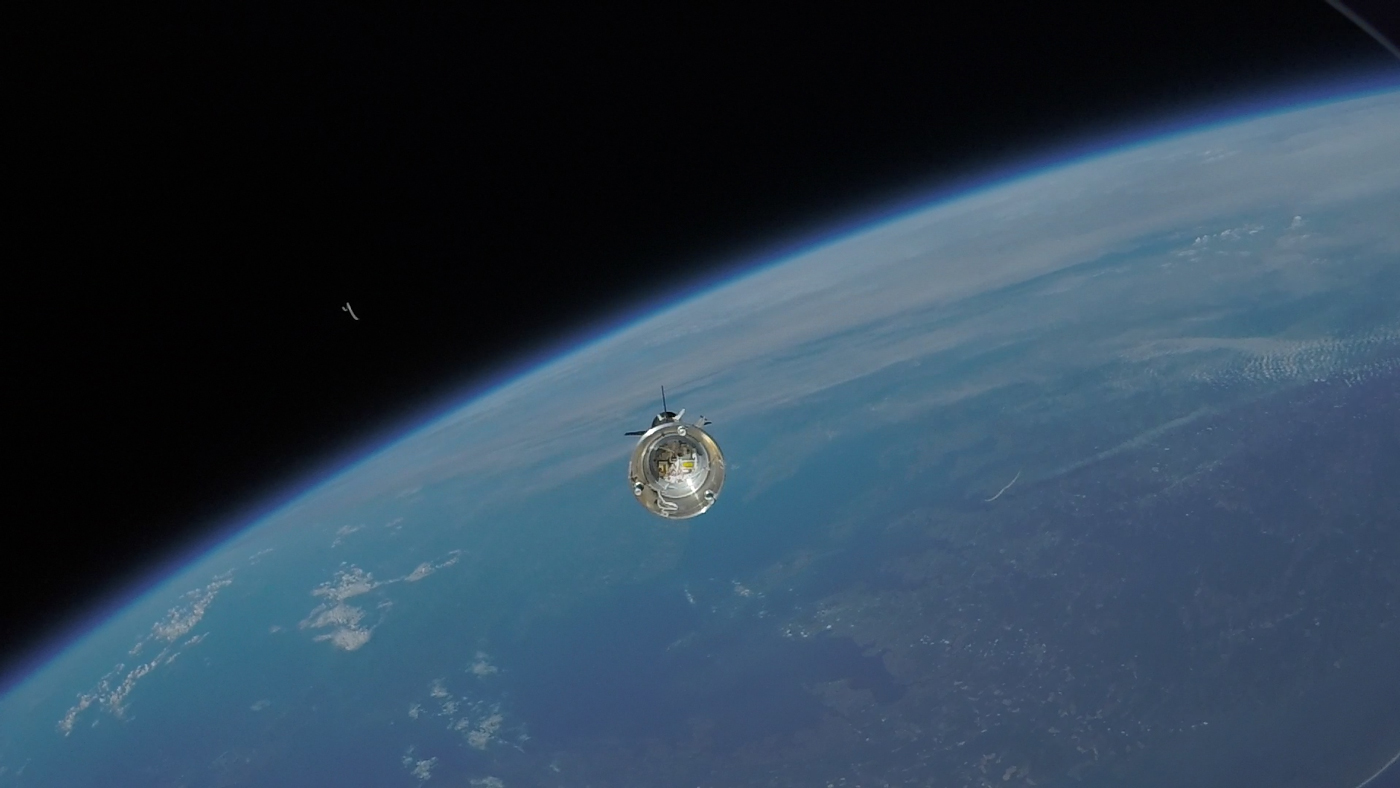Watch NASA Break a Speed Record in This Mars Parachute Test
NASA is preparing technology for use on its Mars 2020 rover mission, due to land on the Red Planet in February 2021 — and it's breaking world records along the way.
Landing on Mars is notoriously challenging because of the planet's thin atmosphere, which makes it difficult to slow down a spacecraft enough to land gently on its surface. In order to land their heaviest yet rover on Mars, NASA had to redesign an existing landing-parachute design — the same one that protected the Curiosity rover — with even stronger materials, including the Kevlar traditionally found in bulletproof vests. [NASA's Mars Rover 2020 Mission in Pictures]

The agency conducted its final test of its new parachute in September as part of its Advanced Supersonic Parachute Inflation Research Experiment (ASPIRE) project. The results are in and the parachute has been approved for the 2020 launch.
"Like all our prior Mars missions, we only have one parachute and it has to work," John McNamee, project manager of Mars 2020 at NASA's Jet Propulsion Laboratory in California, said in a statement. "The ASPIRE tests have shown in remarkable detail how our parachute will react when it is first deployed into a supersonic flow high above Mars. And let me tell you, it looks beautiful."
Last month, the 180-pound parachute, plus a camera designed to watch it deploy, was launched on a sounding rocket from NASA's Wallops Flight Facility in Virginia. The rocket carried it to about 23 miles (37 kilometers) above Earth's surface, where the atmosphere's density is about as dense as 6 miles (10 km) above Mars' surface, the height at which the Mars 2020 parachute is due to deploy.
During the test, the parachute deployed completely in just four-tenths of a second, the fastest inflation of such a large parachute, according to NASA. That will mark the end of the parachute tests, but not the end of Mars 2020 preparations.

"We are all about helping 2020 stick its landing 28 months from now," Ian Clark, the test's technical lead from JPL, said in the statement. "I may not get to shoot rockets to the edge of space for a while, but when it comes to Mars — and when it comes to getting there and getting down there safely — there are always exciting challenges to work on around here."
Get the Space.com Newsletter
Breaking space news, the latest updates on rocket launches, skywatching events and more!
Email Meghan Bartels at mbartels@space.com or follow her @meghanbartels. Follow us @Spacedotcom and Facebook. Original article on Space.com.
Join our Space Forums to keep talking space on the latest missions, night sky and more! And if you have a news tip, correction or comment, let us know at: community@space.com.

Meghan is a senior writer at Space.com and has more than five years' experience as a science journalist based in New York City. She joined Space.com in July 2018, with previous writing published in outlets including Newsweek and Audubon. Meghan earned an MA in science journalism from New York University and a BA in classics from Georgetown University, and in her free time she enjoys reading and visiting museums. Follow her on Twitter at @meghanbartels.
